Today, we have the pleasure of talking with N.Y. Times and USA Today best-selling author Hugh Howey. He is the author of the award-winning Molly Fyde Saga and I, Zombie, but is perhaps best known for Wool.
Woolintroduces readers to the Silo Saga and a ruined and toxic landscape, where a community exists in a giant silo underground, hundreds of stories deep. There, men and women live in a society full of regulations they believe are meant to protect them. Sheriff Holston, who has unwaveringly upheld the silo’s rules for years, unexpectedly breaks the greatest taboo of all: He asks to go outside.
His fateful decision unleashes a drastic series of events. An unlikely candidate is appointed to replace him: Juliette, a mechanic with no training in law, whose special knack is fixing machines. Now Juliette is about to be entrusted with fixing her silo, and she will soon learn just how badly her world is broken. The silo is about to confront what its history has only hinted about and its inhabitants have never dared to whisper. Uprising.
Woolis available in hard cover, paperback, eBook and audio book. It is on the fast track to be a major motion picture and, at last count, has been picked up by 28 countries for translation. Amidst this whirlwind of success, Hugh was nice enough to answer a few questions about the man behind the books.
Mark Miller: In meeting other authors, I have found that our life story can sometimes be as interesting as the ones we create. Can you tell us a little about your life? What did you do before you were an author? How did that help you become an author?
Hugh Howey: I’ve had numerous jobs and careers. My main gig was as a yacht captain, which allowed me to see quite a bit of the world, meet fascinating people, and get in some wild predicaments. I think each of those helped me be a better writer. Roofing for two years was a great way to daydream and also a great job for wanting one where you worked from home in your pajamas.
MM:Roofing in your pajamas probably doesn’t work too well, but you might be able to get away with it on a yacht. Life experience is key to writing and it sounds like you’ve had some good ones. What about your hobbies, pajama-clad or not, do they add to your writing in any way?
HH:I’m a nut for photography. It definitely adds to my writing. It teaches you to see the details in the world. You also learn to tell a story with a single snapshot.
MM:I believe you share some of your photography on Facebook. You definitely share your life. Being a world traveler and best-selling author, how different is that life now versus about a year ago?
HH:Not so different when it comes to work. But a year ago, I was living in the mountains of North Carolina. Last June, my wife and I moved to south Florida when she took a different job. So that’s changed quite a bit. I now see more sand and far less snow!
MM:Less snow is always good. I will say, at least snow melts. Sand always seems to be hanging around and winds up in some odd places. You traded the beautiful mountains of North Carolina for the beautiful waters of South Florida. Even with the move, it sounds like you are traveling as much as ever. With all the travel and book tours, like Germany and Australia, what do you miss most from your old life? Does your wife have any thoughts on the subject? Does it affect her in any way?
HH:I miss the steadiness of my writing routine. Travel makes writing difficult. I think my wife gets worn out from me being away from home so much. Since I work from home, I normally keep up with the cleaning and food prep. I also watch and entertain the dog. So it’s a lot more work for her when I’m gone. Plus, I think she misses me. A little.
MM:That is a very familiar routine to me, except for the globe-trotting. Maybe you should try adding some children to the mix…but let’s change the subject. Many consider Wool a must read. When you open a book, what do you consider a must read? What elements are you looking for to make it a must read?
HH:For me, I have to learn something. It has to expand my mind. I mostly read non-fiction, but I read a work recently that blew me away with its prose and plot. It’s called Lexicon by Max Barry, and it comes out in June. One of those books you want to read a second time.
MM:Max is an Australian author and is also known for his online political simulation game Nation States. It sounds like he will be making his mark soon. There are so many up and coming authors these days with changes in independent, digital and self-publishing. There are also a growing number of authors and aspiring authors that write fan fiction, Amazon recently made an announcement about it. You have even posted about Wool fan fiction and seem to encourage it. How do you feel about other writers creating stories in your world? Have you written any fan fiction? If so, can you name the franchise?
HH:I fully support it. Of course, I would never ask or expect anyone to write fan fiction in my world, but when people approached me about it, I gave it my full blessing. The idea of charging money for the fan fiction came from me. I just feel like artists should be bold enough to ask for a dollar for their hard work. And a lot of the fan fiction is better than the source material. I haven’t written any fan fiction, but it’s something I’m keen on now that I’ve seen it work the other way. My first foray might be a Dr. Who episode, just for fun. Maybe I’ll shop it to the studio and see what they have to say. :)
MM:I can picture it now – the TARDIS materializes in a cave; the Doctor and his companion walk out and discover they are at the bottom of an enormous spiral staircase. Or maybe Firefly? After all, you are a captain. Also, don’t think I’ll let your “fan fiction is better than the source material” comment go unnoticed. It is something I have seen from you on more than one occasion: you appear to be a modest, genuine person. It is refreshing. You are as much an author as you are a fan. Allowing for a fanboymoment, are there any established authors that you would like to see write a story in your franchise? Any with which you would like to co-write anything?
HH:Oh, I would hate to suggest that anyone write stories in my franchise. That would have to be up to them. If I co-wrote something with another author, it would ideally be my wife. I’m trying to convince her to publish some self-help shorts. She’s a psychologist with a gift for helping people, and books could reach a much wider audience.
MM:There’s that modesty again. You wear it well and you seem to have a great relationship with your wife. Isn’t that every husbands’ dream to write with his wife? Or at least every husband that is an author? I even have a concept when I can convince mine to join me. We have covered quite a bit already, but I wanted to rewind a little and ask have you always wanted to be an author? And looking forward, where do you see yourself in five years? Still writing or pursuing another goal?
HH:Yeah, this has always been a dream of mine. In five years, I see myself on a sailboat, sailing around the world. Writing as I go, of course.
MM:With Shiftclimbing the charts, it looks like your long term goals are coming sooner rather than later. As you try to hold your laptop steady, bobbing on the Caribbean waves, can readers expect more stories from the silo? What others stories are you looking forward to sharing with the world?
HH: There’s one more book coming out in the series entitled Dust. It will be out August 17th of this year. And then it’s on to other stories.
MM:Every good story deserves to be a trilogy, at least. Whatever those other stories might be (hopefully one Dr. Who episode), this is only the beginning for you. Congratulations on everything so far and thank you for taking the time to be here today. I would like to end with a fun question: If you could be any fictional character, who and why?
HH:I’d be Han Solo. It’s everything I knew from being a yacht captain, but in outer space. That’s the job for me. With a Wookie for a best friend, which is like a dog, but better. A dog you can talk to and play chess with. Sign me up!
For more author interviews and guest posts, please visit the blog archive:
Shares and Comments are appreciated.
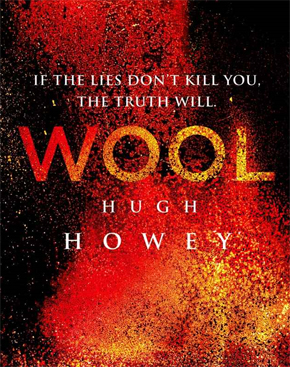 We have been discussing Self-Published books for the last few weeks and we have been talking for months about how the publishing industry is changing, so I thought I should make sure you don’t miss this article written by Wall Street Journal’s Alexandra Alter. It is an excellent article and one you really should read (the whole thing). It is long, but worth the five minutes of time. If for some reason you can’t take the time to read it, click on the above link and at least listen to the interview with Ms. Alter about her article. But in the article, she talks about how Hugh Howey got his book off the ground.
We have been discussing Self-Published books for the last few weeks and we have been talking for months about how the publishing industry is changing, so I thought I should make sure you don’t miss this article written by Wall Street Journal’s Alexandra Alter. It is an excellent article and one you really should read (the whole thing). It is long, but worth the five minutes of time. If for some reason you can’t take the time to read it, click on the above link and at least listen to the interview with Ms. Alter about her article. But in the article, she talks about how Hugh Howey got his book off the ground.
This just might be the article that keeps you going when things seem bleak. I just ordered Part One of WOOL on Amazon. It is free for download to your Kindle.
Simon & Schuster has put down six figures for print rights to a post-apocalyptic thriller called “Wool” that it believes could draw the same readers that made “The Hunger Games” trilogy a success.
Simon & Schuster’s print-only editions of Hugh Howey’s Wool, which brought in over a million dollars as a self-published ebook was published yesterday. Howey’s long holdout for a traditional publishing deal came a reality and allowed him to keep his ebook rights.
Hugh Howey’s postapocalyptic thriller “Wool” has sold more than half a million copies and generated more than 5,260 Amazon reviews. Mr. Howey has raked in more than a million dollars in royalties and sold the film rights to “Alien” producer Ridley Scott. And Simon & Schuster hasn’t even released the book yet.
In a highly unusual deal, Simon & Schuster acquired print publication rights to “Wool” while allowing Mr. Howey to keep the e-book rights himself. Mr. Howey self-published “Wool” as a serial novel in 2011, and took a rare stand by refusing to sell the digital rights. Last year, he turned down multiple seven-figure offers from publishers before reaching a mid-six-figure, print-only deal with Simon & Schuster.
“I had made seven figures on my own, so it was easy to walk away,” says Mr. Howey, 37, a college dropout who worked as a yacht captain, a roofer and a bookseller before he started self-publishing. “I thought, ‘How are you guys going to sell six times what I’m selling now?’ “
It’s a sign of how far the balance of power has shifted toward authors in the new digital publishing landscape. Self-published titles made up 25% of the top-selling books on Amazon last year. Four independent authors have sold more than a million Kindle copies of their books, and 23 have sold more than 250,000, according to Amazon.
Publishing houses that once ignored independent authors are now furiously courting them. In the past year, more than 60 independent authors have landed contracts with traditional publishers. Several won seven-figure advances. A handful have negotiated deals that allow them to continue selling e-books on their own, including romance writers Bella Andre and Colleen Hoover, who have each sold more than a million copies of their books.
Print-only deals remain extremely rare. Few publishers want to part with the fastest-growing segment of the industry. E-book sales for adult fiction and nonfiction grew by 36% in the first three quarters of 2012, compared with the previous year. Mass-market paperback sales shrank by 17% in the same period, while hardcover sales declined by 2.4%, according to a recent report from the Association of American Publishers.
When “Wool” hits bookstores next Tuesday, publishing industry insiders will be watching the experiment closely. Simon & Schuster will release a $15 paperback and a $26 hardcover simultaneously, competing directly against Mr. Howey’s digital edition, which costs $5.99.
“We would have preferred to own all the rights, but that wasn’t going to happen,” says Simon & Schuster President and Publisher Jonathan Karp. “It was a very unusual circumstance.”
“Wool” became a viral hit last winter, a few months after Mr. Howey began publishing the five-part series on Amazon. The novel takes place in a postapocalyptic future where a few thousand remaining humans live in a giant, 144-story underground silo. Couples who want to have a child have to enter a lottery; tickets are distributed only when someone dies. Citizens who break the law are sent outside to choke to death on the toxic air. Those who are sent to their deaths are forced to clean the grime off the digital sensors that transmit grainy images of the ruined landscape to a screen inside the silo. The images are meant to remind residents that the world beyond the silo is deadly, but some begin to suspect their leaders are lying to them about what’s outside and how the world came to ruin.
Mr. Howey says he was watching cable news one day when he came up with the idea of a future where people get all of their information from a single, unreliable screen.
“Wool” landed just as the entertainment industry was searching for a high-concept, dystopian hit like Suzanne Collins’s young-adult “Hunger Games” trilogy or Justin Cronin’s postapocalyptic vampire novel “The Passage.” (Mr. Cronin blurbed “Wool,” calling it “an epic feat of imagination.”) The serial format helped build buzz and anticipation among binge readers who were desperate for the next installment, while the 99-cent price tag made each installment an easy impulse buy. “Wool” was the most favorably reviewed book on Amazon in 2012, with an average rating of 4.8 out of five stars. The novel seems to appeal to both men and women, and has attracted hard-core science fiction fans as well as general readers, much like “The Hunger Games.”
Mr. Howey comes across as a charming, self-deprecating goofball (he posted a video of himself doing ballet on his lawn on YouTube after he signed his publishing deal), but he’s proven to be a savage negotiator and slick marketer. He sent free copies of “Wool” to book bloggers and reviewers at Goodreads, a social-media site for avid readers. Early raves prompted more people to try the book, and the reviews snowballed. “Wool” now has more than 12,500 ratings and around 2,200 reviews on Goodreads. He hosted an “Ask Me Anything” session on the popular website Reddit, fielding users’ questions for more than 12 hours. He encouraged fan art and fan fiction set in the “Wool” universe; his readers have designed book covers and written their own novella-length takes on the story. He conscripted 30 of his most ardent fans to be “beta” readers who edit early drafts of his books for free.
Mr. Howey grew up in Monroe, N.C., the son of a farmer and a schoolteacher. As a teenager he devoured popular science fiction books like “The Hitchhiker’s Guide to the Galaxy” and “Ender’s Game,” and always had a wild imagination. He studied physics and English at the College of Charleston, but dropped out his junior year to sail to the Bahamas. He cycled through a series of odd jobs, working as a yacht captain, a roofer, and a technician for an audio-video company. Four years ago, he decided to give writing a shot. He and his wife were living in a 750-square foot house in Boone, N.C. He was unemployed; his wife, Amber Lyda, was working as a psychologist. He had an idea for a story about a young spaceship pilot who travels across the galaxy in search of her missing father. He sold the novel, “Molly Fyde and the Parsona Rescue,” to a small Indiana publisher for less than a thousand dollars. Sales were meager.
“When he first published ‘Molly Fyde,’ I’d call his wife and say, ‘How many books has he sold? Should I go to Amazon and buy three more?’” says his mother, Gay Murrill, who owns a yarn shop in Charleston.
Mr. Howey kept trying. He got a 30-hour-a-week job at a university bookstore that paid only $10 an hour but gave him some flexibility. He got up at two or three in the morning to write, and wrote through his lunch hour and after dinner. He designed his own cover art, enlisting his wife and sister to pose in photos. He would often jolt up in bed in the middle of the night to scribble down ideas.
“It was almost a compulsion for him,” says Ms. Lyda. Ms. Lyda said she pleaded with him to leave his pen open on his nightstand, because the clicking noise of his pen kept waking her up.
“Wool” started as a short story that Mr. Howey dashed off in three weeks. He posted it on Amazon for 99 cents in July 2011. Within three months, the story had sold 1,000 copies. Mr. Howey was stunned.
“I told my wife, ‘Baby, we’re going to be able to pay a couple of bills off this short story,’ ” he said.
Readers begged for a sequel, and in November, Mr. Howey released another installment. He sold more than 3,000 copies that month. The next month, he released two more installments and sold nearly 10,000 copies total. In January, he released the final installment, for $2.99, and published all five as a single volume, for $5.99. Collectively, he sold 23,000 copies of all the editions that month. “Wool” shot up Amazon’s science-fiction best-seller list. Mr. Howey quit his job.
Literary agents started courting him. The BBC proposed a television deal based on the series. Most of the agents wanted to auction off print and digital rights to the highest bidder. Mr. Howey wasn’t interested. One agent, Kristin Nelson, said she didn’t think he should sign away digital rights, but that she could help him with foreign rights and film and TV deals. He signed with her in January of last year. They sold the series in 24 foreign countries. Several British publishers bid on the book, and Century won rights for a high-six-figure sum.
Ms. Nelson also sent “Wool” to U.S. publishers, and received a few low six-figure offers. Mr. Howey turned them down. Through Amazon’s self-publishing platform, he was collecting 70% of royalties, which amounted to nearly $40,000 a month. Most publishers offer a digital royalty rate that amounts to 10% to 15% of a book’s retail price.
That spring, Mr. Howey began selling the books on Barnes & Noble‘s BKS -2.57%Nook and Kobo’s e-reader and through Apple’s iTunes store. An agent at United Talent Agency began shopping film rights. Three studios bid on the book. 20th Century Fox and Ridley Scott, director of the blockbuster science-fiction films “Blade Runner” and “Alien,” optioned it. Indie writer and director J Blakeson is writing the screenplay.
After news of the movie deal broke, publishers pounced again. Mr. Howey flew to New York in May to meet with five major publishers. Four of them bid. Mr. Howey, who by then was making $120,000 a month, wasn’t swayed. Some of the publishers wanted to change the book’s title, a proposal that Mr. Howey called “comical,” since it would sabotage his online branding efforts. Others insisted that he immediately take down his digital edition, which would erase all records of the thousands of five-star reviews the book had accumulated, forcing him to start from scratch.
One meeting went better than the others. Mr. Howey sat down with Mr. Karp, the head of Simon & Schuster, who had heard about “Wool” from two of his top editors and from Dave Cullen, author of “Columbine,” a 2009 book profiling the shooters behind the 1999 mass killing. “When I read more about it and saw what a culture phenomenon it had become, I realized it was something we should take seriously,” Mr. Karp says.
Mr. Karp was unusually solicitous, asking Mr. Howey what kind of deal he would accept. Mr. Howey said he wanted a co-publishing deal, where he kept digital rights and Simon & Schuster held hardcover and paperback rights. Mr. Karp was noncommittal, and said he’d be in touch.
Sales soared over the summer. Mr. Howey and his wife moved to Jupiter, Fla. and bought a slightly larger house—900 square feet. Mr. Howey continued to write and self-publish new books, including a zombie novel and prequels to “Wool” that explore how and why the silos were built.
In October, Amazon discounted “Wool” for 24 hours as part of its Kindle Daily Deal, a discount program that highlights select titles. Amazon dropped the price on the “Wool” Omnibus, which has all five stories, from $5.99 to $1.99. Mr. Howey sold 20,000 in a single day. New offers from publishers poured in, some in the low-seven-figure range.
Then Mr. Howey’s agent got an email from Mr. Karp, asking if they would consider a print-only deal. Ms. Nelson says she wrote him back, “Is this for real?” and he wrote back, “Yes.”
Simon & Schuster now has to transform a digital hit into a traditional print blockbuster. The publisher is sending Mr. Howey on an 11-city tour, and has planned a bold six-figure marketing campaign that will capitalize on the film news and online reviews. They are releasing the book simultaneously in hardcover and paperback in an attempt to capture both the library and first-edition collectors market as well as retailers like Target and Wal-Mart WMT +0.85%. Much of the online marketing will fall to Mr. Howey, who has proved himself to be adept at digital self promotion. He’s still selling 50,000 e-books a month.
“A lot of the things we normally teach authors to do, Hugh has been smart enough to do himself,” says Richard Rhorer, who oversees marketing at Simon & Schuster.
Mr. Howey just returned from book tours in Germany, Scotland, Wales and England, where “Wool” recently hit the best-seller lists. He’s starting to feel more like an established author. “Publishing is changing so quickly that we are all equal experts,” he said. “We’re all trying to figure this out.”
Mr. Howey recalls feeling anonymous at a science fiction conference last summer in Chicago. He got excited for a moment when a woman approached him—he thought she wanted his autograph—but she was looking for the bathroom.
Nearby, fantasy writer George R.R. Martin, author of the best-selling series “A Song of Ice and Fire,” was signing hundreds of books. Mr. Howey went up and introduced himself. When it became clear that Mr. Martin had never heard of him, Mr. Howey told him his novel was No. 6 on Amazon’s list of science-fiction and fantasy best sellers, behind Mr. Martin’s five books. Mr. Martin gamely signed a book for Mr. Howey, inscribing it “To # 6—Keep trying!”
A few months later, Mr. Howey landed at the top of the list, just ahead of Mr. Martin.
Talk tomorrow,
Kathy
Filed under:
article,
authors and illustrators,
Book Contracts,
Publishing Industry,
Self-publishing,
success Tagged:
Alexandra Alter,
Hugh Howey,
Wall Street Journal,
WOOL 


This skirt must be shy because I had a heck of a time trying to photograph it!
I think it has to do with the color or perhaps the fabric (err, or both). Overall I’m happy with the quality of the construction but the camera picked up wobbliness in the fabric that I cannot see with my own eyes. Is my stitching too tight or is that just the way the camera captured the light reflecting on the fabric? Eep, oh well.
I’ve made this skirt a couple of times before, you can see my first version here. It’s a great vintage pattern, Simplicity 8418, c. 1969:

This pattern works really well in lightweight denim. I made another denim skirt after the first one that is a bit longer and with rounded pockets (and navy sailor buttons) that I wear ALL the time. I don’t have many work-appropriate skirts (2 to be exact) and thought I should make one myself as the ones I’ve been seeing in the stores lately are boring ol’ pencil skirts that are overpriced and do nothing for me anyway. (I need the slight flare of the a-line skirt to give me shape.) I wanted something bright and happy!

Like the others I’ve made from this pattern I omitted the waistband. And in this version I took out some of the flare (just a little). Also, I lined it as this fabric is a little sheer and perhaps the tiniest bit scratchy (since it’s wool). The spring-summery colors inspired me to draft some tulip-like pockets:

This photo has been lightened so you can see the details better.
I actually have another skirt cut out, ha! It’s Kelly green corduroy with baby blue and white gingham-lined pockets. (Notice a theme here?) Perhaps I’ll get to it this weekend.
Speaking of this weekend, all of L.A. (OK, the media that I know of) is talking about Carmageddon; this is where part of the 405 freeway is shutting down tonight through Monday. Shut down a freeway in Los Angeles and it’s the end of the world. Good thing I don’t drive much. I’ll be sewing or drawing (and very likely, cleaning!) anyway. Do you have any fun plans?

Want to try dyeing things but don’t know where to start?
A reader wrote me recently asking for help.
Where to start, what to read?
The easiest kind of dyeing to start with is food dye on animal fibers. I love this because you can do it in the kitchen with grocery-store items, the results are super-satisfying, and the kids can join in.
What are animal fibers? Wool, silk, cashmere, you get the idea
Wool and Cashmere:
You can do some beautiful things with Kool-Aid and wool, and IT WILL NEVER WASH OUT.
Kool-Aid (or Easter egg dye) and wool yarn is a perfect starter project, especially if you knit. You can dye it with a rainbow of colors, using your microwave. Check out this article for details. Lion Brand makes an undyed 100% wool yarn called Fisherman’s Yarn that is very reasonably priced. I used to buy it at Hobby Lobby, but it may also be available at Michael’s and other craft stores. Knitpicks also sells undyed yarn, in a wider variety of weights and variations. Their prices are very reasonable also, but you do have to order it. Also try dharmatrading.
You can dye pieces of old wool or cashmere sweaters in a similar way, but it’s a little tricky—-you should be prepared for uneven results. Here’s a project of mine with Easter egg dye on cashmere. I would recommend starting with a light-colored sweater and dyeing smaller pieces (an arm or less) at a time, as a sweater acts like a sponge to the dye, absorbing the color before it gets the chance to circulate around the fabric.
The process is similar to the yarn-dyeing project, but use a larger amount of dye and a larger container, on the stove instead of the microwave. I used my big soup pot. The same process should work for wool and cashmere wovens, though I’ve never tried it.
Silk:
Kool-Aid, Easter egg dye, or food coloring also works well on silk. I’ve used it to make playsilks, with the directions here. I’ve also dip-dyed silk scarves, which you can see here. After heat-setting, these dyes are not quite as colorfast as in wool and cashmere, so I would recommend hand-washing, but the bleeding is very little. Also, dry out of direct sunlight.
With any dyeing project, there’s a certain amount of risk involved. You never know exactly what your finished project is going to look like, and for me, that’s part of the thrill. Be prepared for that uncertainty, because even if your project turns out beautifully, chances are it won’t be exactly as you envisioned.
More about other kinds of dyeing soon.

 1 Comments on Getting Started with Dyes, Part I: Animal Fibers, last added: 1/14/2011
1 Comments on Getting Started with Dyes, Part I: Animal Fibers, last added: 1/14/2011





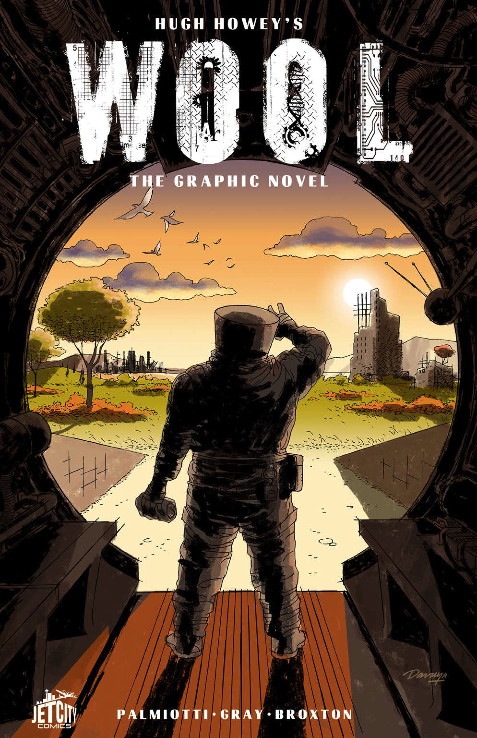
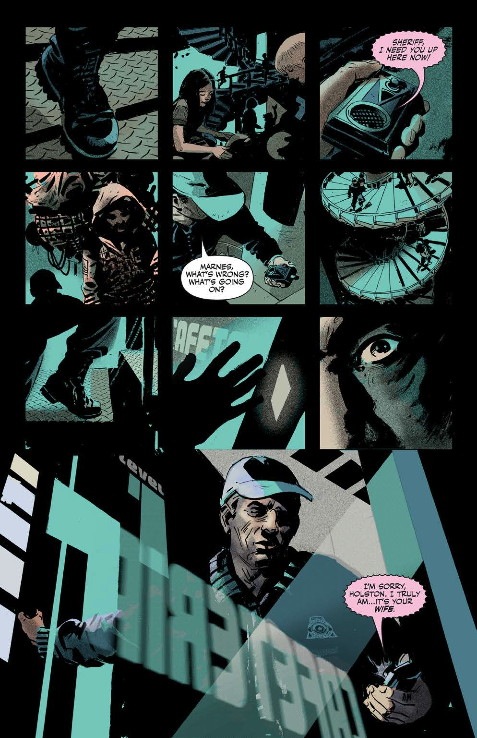



 We have been discussing Self-Published books for the last few weeks and we have been talking for months about how the publishing industry is changing, so I thought I should make sure you don’t miss this article written by
We have been discussing Self-Published books for the last few weeks and we have been talking for months about how the publishing industry is changing, so I thought I should make sure you don’t miss this article written by 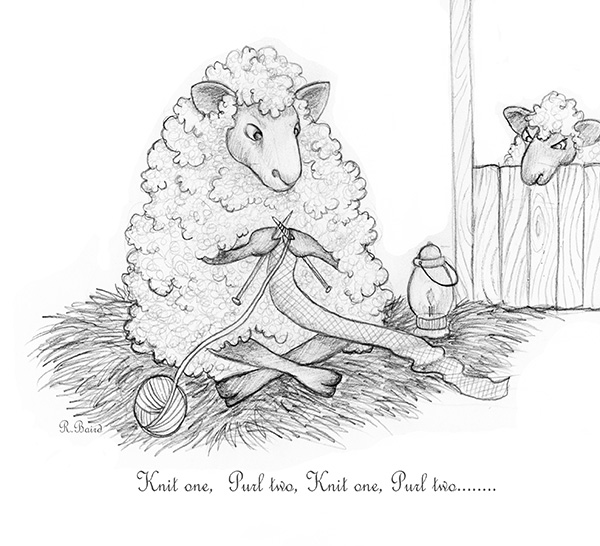

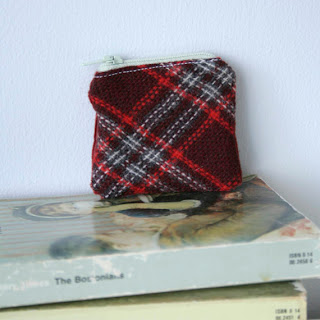
































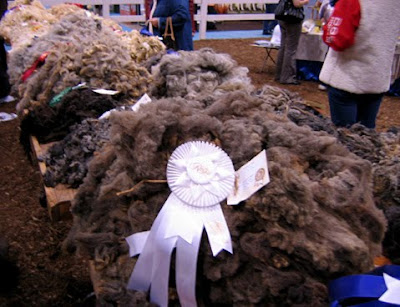
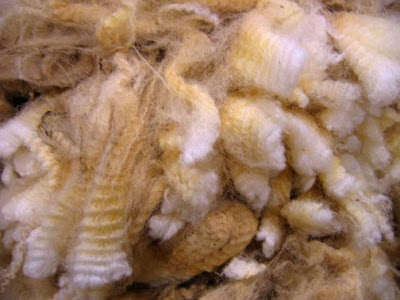











Even liking a lot what Palmiotti & Gray are doing, I’ll wait 12 weeks to pay 5$ instead of 18$.